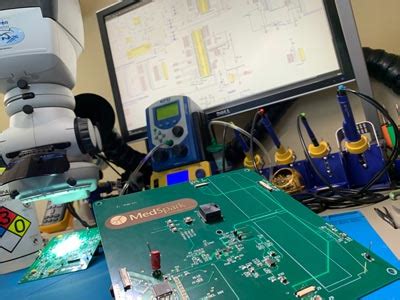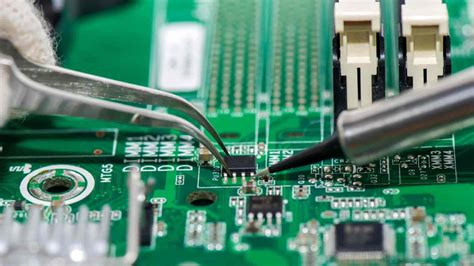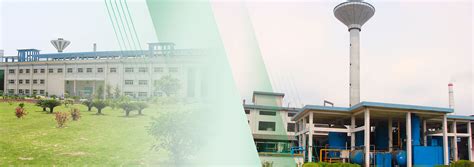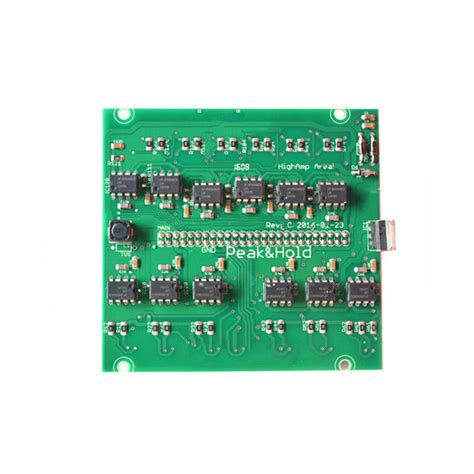Flex pcb dielectric constant
Understanding The Role Of Dielectric Constant In Flex PCB Design
In the realm of flexible printed circuit boards (PCBs), understanding the dielectric constant is crucial for optimizing performance and ensuring reliability. The dielectric constant, often denoted as εr, is a measure of a material’s ability to store electrical energy in an electric field.
This property is particularly significant in the design and functionality of flex PCBs, which are increasingly used in a variety of applications due to their adaptability and space-saving characteristics.
To begin with, the dielectric constant of the substrate material in a flex PCB influences the speed at which electrical signals can travel through the circuit.
A higher dielectric constant typically results in slower signal propagation, which can be a critical factor in high-frequency applications. Therefore, selecting a substrate with an appropriate dielectric constant is essential to meet the specific speed and frequency requirements of the application. For instance, in high-speed digital circuits, a lower dielectric constant is often preferred to minimize signal delay and ensure efficient data transmission.
Moreover, the dielectric constant affects the impedance of the circuit.
Impedance matching is vital in preventing signal reflection and loss, which can degrade the performance of the PCB. By carefully choosing materials with suitable dielectric properties, designers can achieve the desired impedance levels, thereby enhancing the overall functionality of the circuit. This is particularly important in RF and microwave applications, where precise impedance control is necessary to maintain signal integrity.
In addition to signal speed and impedance, the dielectric constant also plays a role in the thermal management of flex PCBs.
Materials with a higher dielectric constant generally exhibit better thermal stability, which can be advantageous in applications where the circuit is exposed to varying temperatures. This stability helps in maintaining consistent performance and prolonging the lifespan of the PCB. However, it is important to balance this with other factors, such as flexibility and mechanical strength, to ensure that the PCB can withstand the physical demands of its intended use.
Furthermore, the dielectric constant can influence the size and weight of the flex PCB.
A material with a higher dielectric constant allows for a reduction in the thickness of the dielectric layer, which can lead to a more compact and lightweight design. This is particularly beneficial in applications where space and weight are at a premium, such as in portable electronic devices and aerospace technologies.
In conclusion, the dielectric constant is a fundamental parameter in the design and optimization of flex PCBs. It affects various aspects of the circuit’s performance, including signal speed, impedance, thermal management, and physical dimensions. By understanding and carefully selecting materials based on their dielectric properties, designers can enhance the performance and reliability of flex PCBs, ensuring they meet the specific demands of their applications. As technology continues to advance, the role of the dielectric constant in flex PCB design will remain a critical consideration, driving innovation and enabling the development of more sophisticated and efficient electronic devices.

How Dielectric Constant Affects Signal Integrity In Flexible PCBs
In the realm of flexible printed circuit boards (PCBs), the dielectric constant is a critical parameter that significantly influences signal integrity. As electronic devices become increasingly compact and complex, the demand for flexible PCBs has surged, necessitating a deeper understanding of how dielectric properties affect their performance. The dielectric constant, often denoted as εr, is a measure of a material’s ability to store electrical energy in an electric field. It plays a pivotal role in determining the speed and quality of signal transmission through the PCB.
To comprehend the impact of the dielectric constant on signal integrity, it is essential to first consider the nature of signal propagation in PCBs.
Signals travel through conductive traces on the board, and the surrounding dielectric material influences their speed and attenuation. A higher dielectric constant generally results in slower signal propagation, as the material stores more energy. This can lead to increased signal delay, which is particularly detrimental in high-frequency applications where timing is critical. Consequently, selecting a dielectric material with an appropriate dielectric constant is crucial for maintaining signal integrity.
Moreover, the dielectric constant affects the characteristic impedance of transmission lines on the PCB.
Impedance mismatches can cause signal reflections, leading to distortion and loss of signal quality. By carefully choosing materials with suitable dielectric properties, designers can ensure that the impedance of the transmission lines matches the system requirements, thereby minimizing reflections and preserving signal integrity. This is especially important in high-speed digital circuits, where even minor impedance mismatches can result in significant performance degradation.
In addition to affecting signal speed and impedance, the dielectric constant also influences crosstalk between adjacent traces on a flexible PCB.
Crosstalk occurs when a signal in one trace induces an unwanted signal in a neighboring trace, potentially leading to data corruption. A higher dielectric constant can exacerbate crosstalk by allowing more energy to couple between traces. Therefore, selecting materials with a lower dielectric constant can help mitigate crosstalk and enhance overall signal integrity.
Furthermore, the dielectric constant is temperature-dependent, which adds another layer of complexity to its impact on signal integrity.
As the temperature of a flexible PCB changes, so does the dielectric constant of its materials. This variation can lead to fluctuations in signal speed and impedance, potentially affecting the performance of the entire system. Therefore, it is imperative for designers to consider the thermal stability of the dielectric materials used in flexible PCBs to ensure consistent performance across a range of operating conditions.
In conclusion, the dielectric constant is a fundamental factor that affects signal integrity in flexible PCBs. It influences signal speed, impedance, and crosstalk, all of which are critical to the performance of modern electronic devices. By understanding and carefully selecting materials with appropriate dielectric properties, designers can optimize the performance of flexible PCBs, ensuring reliable and efficient signal transmission. As technology continues to advance, the importance of the dielectric constant in flexible PCB design will only grow, underscoring the need for ongoing research and innovation in this field.

Comparing Dielectric Materials For Optimal Flex PCB Performance
In the realm of flexible printed circuit boards (PCBs), the choice of dielectric material plays a pivotal role in determining the overall performance and reliability of the circuit. The dielectric constant, a critical property of these materials, significantly influences signal integrity, impedance control, and the overall electrical performance of the PCB. As the demand for more compact, efficient, and high-speed electronic devices continues to grow, understanding and selecting the appropriate dielectric material becomes increasingly important.
To begin with, the dielectric constant, often denoted as εr, is a measure of a material’s ability to store electrical energy in an electric field.
In the context of flex PCBs, a lower dielectric constant is generally preferred as it reduces signal propagation delay and minimizes signal loss, thereby enhancing the speed and efficiency of the circuit. However, the choice of dielectric material is not solely dependent on its dielectric constant. Other factors such as thermal stability, mechanical flexibility, and cost also play crucial roles in the selection process.
Polyimide is one of the most commonly used dielectric materials in flex PCBs due to its excellent thermal stability and mechanical properties.
With a dielectric constant typically ranging from 3.4 to 3.5, polyimide offers a good balance between performance and flexibility. Its ability to withstand high temperatures makes it suitable for applications where thermal management is a concern. However, for applications requiring even lower dielectric constants, materials such as liquid crystal polymer (LCP) and polytetrafluoroethylene (PTFE) may be considered.
LCP, with a dielectric constant of approximately 2.9 to 3.0, offers superior electrical performance compared to polyimide.
Its low moisture absorption and excellent dimensional stability make it an attractive option for high-frequency applications. Moreover, LCP’s inherent flame retardancy and chemical resistance further enhance its suitability for demanding environments. On the other hand, PTFE, known for its exceptionally low dielectric constant of around 2.1, provides outstanding electrical properties, making it ideal for microwave and RF applications. However, PTFE’s higher cost and processing challenges may limit its use in cost-sensitive projects.
In addition to these materials, advancements in composite dielectrics have introduced new possibilities for optimizing flex PCB performance.
By combining different materials, manufacturers can tailor the dielectric properties to meet specific application requirements. For instance, incorporating ceramic fillers into a polymer matrix can enhance thermal conductivity while maintaining a low dielectric constant. This approach not only improves signal integrity but also addresses thermal management challenges in high-power applications.
As we consider the various dielectric materials available for flex PCBs, it is essential to weigh the trade-offs between electrical performance, mechanical properties, and cost.
While a lower dielectric constant is desirable for high-speed applications, it is equally important to ensure that the chosen material can withstand the mechanical stresses and environmental conditions it will encounter. Furthermore, as technology continues to evolve, ongoing research and development in dielectric materials promise to offer even more options for optimizing flex PCB performance.
In conclusion, selecting the optimal dielectric material for flex PCBs requires a comprehensive understanding of the material properties and their impact on circuit performance. By carefully evaluating the dielectric constant alongside other critical factors, designers can make informed decisions that enhance the functionality and reliability of their electronic devices. As the industry progresses, the continued exploration of innovative materials will undoubtedly pave the way for more advanced and efficient flex PCB solutions.

Innovations In Dielectric Materials For Next-Gen Flex PCBs
In the rapidly evolving landscape of electronics, flexible printed circuit boards (flex PCBs) have emerged as a pivotal technology, enabling the development of innovative devices that require adaptability and compactness.
A critical aspect of flex PCBs is the dielectric material used, which significantly influences the board’s performance, particularly in high-frequency applications.
The dielectric constant, a measure of a material’s ability to store electrical energy in an electric field, plays a crucial role in determining the signal integrity and overall efficiency of flex PCBs. As the demand for more sophisticated electronic devices grows, innovations in dielectric materials are becoming increasingly important to meet the stringent requirements of next-generation applications.
Traditionally, polyimide has been the material of choice for flex PCBs due to its excellent thermal stability, mechanical flexibility, and favorable dielectric properties.
However, as electronic devices become more complex and miniaturized, the limitations of conventional materials are becoming apparent. For instance, the relatively high dielectric constant of polyimide can lead to signal loss and crosstalk in high-frequency circuits, which are undesirable in modern high-speed communication systems. Consequently, researchers and manufacturers are exploring alternative dielectric materials that offer lower dielectric constants while maintaining the necessary mechanical and thermal properties.
One promising avenue of innovation is the development of composite materials that combine the desirable properties of different substances.
By integrating low-dielectric-constant fillers into a polyimide matrix, it is possible to create a composite material that retains the flexibility and thermal stability of polyimide while reducing the overall dielectric constant. These fillers, often made from materials such as silica or ceramic nanoparticles, can be engineered to optimize the dielectric properties without compromising the mechanical integrity of the flex PCB. This approach not only enhances signal integrity but also opens up new possibilities for the design and functionality of electronic devices.
In addition to composite materials, advancements in polymer chemistry are also contributing to the development of novel dielectric materials for flex PCBs.
Researchers are synthesizing new polymers with inherently low dielectric constants, which can be processed into thin, flexible films suitable for use in flex PCBs. These polymers offer the advantage of being tailored at the molecular level to achieve specific electrical, thermal, and mechanical properties, providing a high degree of customization for various applications. Moreover, the use of advanced polymerization techniques allows for the production of these materials at a scale and cost that is feasible for commercial applications.
Furthermore, the integration of nanotechnology into dielectric material development is another exciting frontier.
By manipulating materials at the nanoscale, it is possible to achieve unprecedented control over their electrical properties. For example, the incorporation of carbon-based nanomaterials, such as graphene or carbon nanotubes, into dielectric films can significantly enhance their performance by reducing the dielectric constant and improving thermal conductivity. This not only benefits the performance of flex PCBs but also contributes to the overall miniaturization and efficiency of electronic devices.
In conclusion, the quest for improved dielectric materials for flex PCBs is driving significant advancements in material science and engineering. By exploring composite materials, novel polymers, and nanotechnology, researchers are developing innovative solutions that address the challenges posed by next-generation electronic devices. As these technologies continue to evolve, they will undoubtedly play a crucial role in shaping the future of flexible electronics, enabling the creation of more efficient, reliable, and versatile devices.






